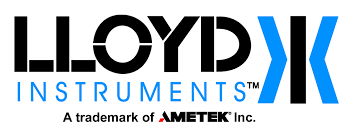When OneLeg initially developed their key product, a one legged stool for gardening, their primary focus was on functionality and ergonomics.
The stool was designed with the intention of aiding the back and legs of the user when gardening, which led to the idea of designing a stool with a curved foot. This allows users to lean and rotate freely, and provides them with a large working radius without causing strain to their back and knees.
Case Story - Plastic Testing of Furniture
Further Design Improvements to OneLeg Stool
Making the stool lightweight was the next design consideration for OneLeg, to allow portability around the garden. To achieve this, the stool was designed with a cavity core and seat.
The development of a silicon seat provided users with extra comfort and allowed them to lean even more without sliding on the seat. In addition, the development of an anti-slip foot cover avoided sliding of the stool on slippery indoor surfaces.
OneLeg also identified several additional markets for the ergonomic stool, and designed a new model, which was higher than the earlier model. This extended the application of the stool into additional markets, including education, automotive and physiotherapy.
The Requirement
Prior to launching the stool to new markets, including physiotherapists, car mechanics and children’s day care centres, OneLeg decided to evaluate the strength of the stool to determine whether the stool had the strength to survive intense usage on an everyday basis.
In addition, OneLeg decided to test whether the newly developed silicone seat had the flexibility and strength for daily use by professional car mechanics or playful children. It also wanted to know the optimum weight that could be supported by the stool without breaking.
Lloyd Instruments’ Solution
OneLeg used an LR30KPlus materials tester from Lloyd Instruments to perform the compression tests in order to determine the optimum weight that could be supported by the stools. The results confirmed the ability of the stool to support a weight of 270kg.
In addition, the results revealed that the stool was able to withstand 1,000kg of force without breaking. The redistribution of the plastic into the stool cavity caused the stool to compress rather than break.
.jpg)
OneLeg and LR30KPlus materials tester
OneLeg also performed tensile tests on the silicone material utilized for the anti-slip covers using the same materials tester by simply changing its grips.
From the results, the company discovered that the silicone covers had the flexibility and strength to survive intense use on a daily basis without breaking.
Being able to use the same test machine for the different test types that we performed on our stools and accessories was a big advantage. All we did was change the grips when we changed the test type.
The built in analysis software contained a video capture feature and a library of standard test set ups, so all we needed to do was turn on the machine and push a few buttons. Not only did this solution provide us with high precision test results, it also kept costs down.
Susanne Schmidt, owner of OneLeg
Benefits
These test results helped OneLeg increase their business, due to the knowledge of how the stools responded when exposed to more than the recommended max weight,
The tests helped open up new industries and new markets to their business, including United Kingdom, Germany and Switzerland
We are facing very demanding customers. Some of them are using active sitting for kids and for their teachers. Thus we needed to convince export markets that OneLeg could handle the rough handling that schools typically expose their stools to.
With the test results we got from using the LR30KPlus, and the knowledge of how the stools react when exposed to more than the max weight load, we were able to convince important agents in some of our focus countries to take OneLeg into their assortment towards schools and kindergartens.
This new opportunity was secured through professional counselling from AMETEK TCI along with the test results and video capture showing the breaking point for our stools.
Susanne Schmidt.

This information has been sourced, reviewed and adapted from materials provided by Lloyd Instruments Ltd.
For more information on this source, please visit Lloyd Instruments Ltd.